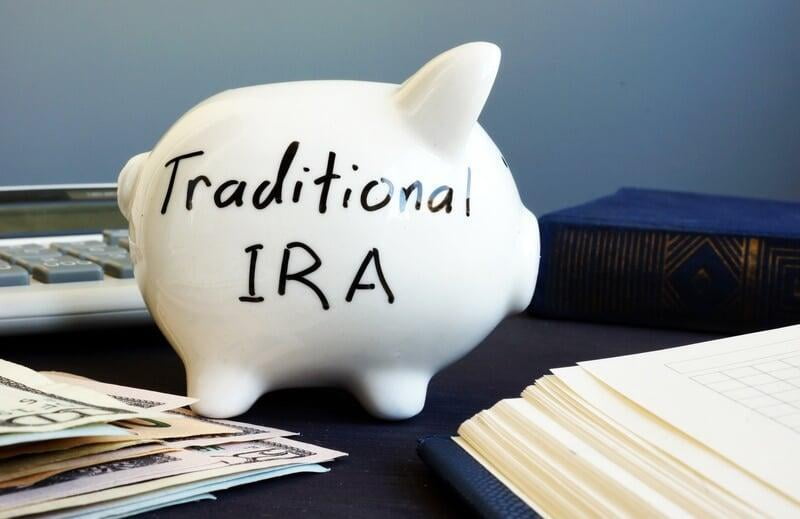Long-Term Financial Planning
Non-Qualified Plans
Long-Term Financial Planning
Non-Qualified Plans
- Deferred-compensation plans
- Executive bonus plans
- Split-dollar life insurance plans
- Group carve-out plans
Plans of deferred compensation described in IRC section 457 are available for certain state and local governments and non-governmental entities tax exempt under IRC Section 501. They can be either eligible plans under IRC 457(b) or ineligible plans under IRC 457(f). Plans eligible under 457(b) allow employees of sponsoring organizations to defer income taxation on retirement savings into future years. Ineligible plans may trigger different tax treatment under IRC 457(f).

What Is a 457 Plan?
Generally speaking, 457 plans are non-qualified, tax-advantaged, Deferred-Compensation retirement plans offered by state governments, local governments, and some nonprofit employers. Eligible participants are able to make salary deferral contributions, depositing pre-tax money that is allowed to compound without being taxed until it is withdrawn.
How 457 Plan Works
Notably, 457 plans are similar in nature to 401(k) plans, only rather than being offered to employees at for-profit companies, they cater to state and local public workers, together with highly paid executives at certain nonprofit organizations, such as charities.
Participants of 457 plans set aside a percentage of their salary for retirement. These funds are transferred to the retirement account, where they grow in value without being taxed.
There are two types of 457 plans:
- 457(b): This is the most common 457 plan and is offered to state and local government or non-governmental entities tax exempt under IRC
- 457(b): This is the most common 457 plan and is offered to state and local government or non-governmental entities tax exempt under IRC
Section 501(c) employees.
- 457(f): A plan offered to highly compensated government and select non-government employees.
Employees are allowed to contribute up to 100% of their salary, provided it does not exceed the applicable dollar limit for the year.
- 457(f): A plan offered to highly compensated government and select non-government employees.
457(b) Plan Contributions
As of 2022, employees can contribute up to $20,500 per year (up from $19,500 in 2021) to 457 plans. In some cases, workers are able to contribute even more.
For example, if an employer permits catch-up contributions, workers over the age of 50 may contribute an additional $6,500, making their maximum contribution limit $27,000 ($20,500 + $6,500) in 2022.
2021
- For workers under 50 years old, the total employee-employer contributions cannot exceed $19,500.
- If we include the catch-up contribution for those 50 and over, the limit is $26,000.
2022
- For workers under 50 years old, the total employee-employer contributions cannot exceed $20,500 per year.
- Including the catch-up contribution for those 50 and over, the limit is $27,000.
Also, 457(b) plans feature a "double limit catch-up" provision. This is designed to allow participants who are nearing retirement to compensate for years in which they did not contribute to the plan but were eligible to do so. In this case, employees who are within three years of retirement age (as specified in their plan), may contribute $39,000, twice the annual contribution limit, in 2021; $41,000 in 2022.
Employer matches for 457(b) plans are rareState and local government employers rarely provide matches to employees. With 401(k) and 403(b) plans, the annual contribution limit applies only to employee deferrals, not any money “matched” by the employer. However, if a government employer does make a contribution to a 457(b) plan, it counts toward the total allowable limit for the year.For instance, if a local government employer contributes $1,500 in 2022, the employee may contribute only $19,000. However, a government employer could theoretically kick in the entire yearly limit if it wants.
Taking Withdrawals From a 457(b)
2021
- For workers under 50 years old, the total employee-employer contributions cannot exceed $19,500.
- If we include the catch-up contribution for those 50 and over, the limit is $26,000.
2022
- For workers under 50 years old, the total employee-employer contributions cannot exceed $20,500 per year.
- Including the catch-up contribution for those 50 and over, the limit is $27,000.
If you have a governmental or non-governmental 457(b) plan, you can withdraw some or all of your funds upon retirement even if you are not yet 59½ years old.
There is no 10% penalty for early withdrawals as there is with most early withdrawals from other types of plans. You will owe the income tax on the amount you withdraw.
However, both governmental and non-governmental 457(b) plans fall under the IRS required minimum distribution (RMD) rule that says you must begin withdrawing a specified portion of the funds in your account at age 72 or pay a tax penalty.
IMPORTANT: There's a hefty penalty for failing to take a required minimum distribution: a 50% nondeductible excise tax.
If you have a 457(f) plan at a private non-profit, be prepared for a giant hit when you retire. The entire amount in your account is considered taxable upon your separation from service.
In most cases, the assets will be distributed to you in a lump sum and will be subject to FICA, federal, and state taxes at that time. As noted below, rollovers are not permitted if it is a 457(f) plan.
Required Minimum Distributions (RMDs)
If you have a 457(f) plan at a private non-profit, be prepared for a giant hit when you retire. The entire amount in your account is considered taxable upon your separation from service.
457(b) account holders are subject to required minimum distributions, or RMDs, after reaching a certain age. (Withdrawals are often referred to as "distributions" in IRS parlance.)
After age 72, account owners who have retired must withdraw at least a specified percentage from their 457(b) plans, using IRS tables based on their life expectancy at the time. (Prior to 2020, the RMD age was 701/2 years old.)
Advantages of a 457(b) Plan
Contributions are taken from paychecks on a pre-tax basis, resulting in lower taxable income. For example, if Alex was earning $4,000 per month and contributing $700 to a 457(b) plan, Alex's taxable income for the month is $3,300.
Employees also have the option to invest their contributions in a selection of mutual funds. Importantly, any interest and earnings generated from these vehicles do not get taxed until the funds are withdrawn. Moreover, if an employee resigns, or retires early and needs to withdraw their funds, there is no 10% penalty fee, unlike 401(k), and 403(b) plans.
However, any early distribution from a 457 plan (distribution before 591/2) whereby the funds were a result of a direct transfer or rollover from a qualified retirement plan—such as a 401(k)—would be subject to the 10% penalty tax.
457 plans are taxed as income similar to a 401(k) or 403(b) when distributions are taken. The only difference is there are no withdraw penalties and that they are the only plans without early withdrawal penalties. But you also have the option of rolling the assets in an IRA rollover. This way, you can better control distributions and only take them when needed.
So if you take the entire amount as a lump sum, the entire amount is added to your income and may push you into a higher tax bracket.
With the rollover route, you could take out a little this year, and so on as needed, thus controlling your taxes better. And while it remains inside the IRA, it continues to grow tax-deferred and is protected from creditors.
Limitations of a 457(b) Plan
457 plans are taxed as income similar to a 401(k) or 403(b) when distributions are taken. The only difference is there are no withdraw penalties and that they are the only plans without early withdrawal penalties. But you also have the option of rolling the assets in an IRA rollover. This way, you can better control distributions and only take them when needed.
So if you take the entire amount as a lump sum, the entire amount is added to your income and may push you into a higher tax bracket.
With the rollover route, you could take out a little this year, and so on as needed, thus controlling your taxes better. And while it remains inside the IRA, it continues to grow tax-deferred and is protected from creditors.
Employer-matched contributions count toward the maximum contribution limit. For instance, if an employer contributes $10,000 to the plan, the employee can only add $10,500 until the $20,500 contribution limit is reached (unless they are permitted to use the catch-up option).
In practice, most government employers do not offer contribution matching.
Pros & Cons of Non-Qualified Plans
Pros
- Contributions are tax deductible
- High Contribution Limits
- Earnings and returns are tax-deferred until they are withdrawn
Cons
- Lack of liquidity, 591/2 rule (money cannot be touched before 591/2 otherwise you must pay 10% early withdrawal penalty, then federal and state taxes ). There are some exemptions.
- Volatility, money in these accounts most of the time heavily invested in the stock markets or in particular stock market index such as S&P 500, The Dow Jones, Nasdaq or ETFs. Consequently you may lose money.
- Distributions are Taxable (at the retirement)
- Uncertainty of Tax rates in next 10, 20, 30 years, who knows what would be the tax rates in 20 years? History shows in the US taxes always go up not down.
A traditional IRA is a way to save for retirement that gives you tax advantages. Contributions you make to a traditional IRA may be fully or partially deductible, depending on your filing status and income, and generally, amounts in your traditional IRA (including earnings and gains) are not taxed until you take a distribution (withdrawal) from your IRA.

What Is a Traditional IRA ?
A traditional individual retirement account (IRA) allows individuals to direct pre-tax income toward investments that can grow tax-deferred. The IRS assesses no capital gains or dividend income taxes until the beneficiary makes a withdrawal. Individual taxpayers can contribute 100% of any earned compensation up to a specified maximum dollar amount.
Income thresholds may also apply. Contributions to a traditional IRA may be tax-deductible depending on the taxpayer's income, tax-filing status, and other factors. Retirement savers may open a traditional IRA through their broker (including online brokers or robo-advisors) or financial advisor.
How Traditional IRAs Work
A traditional individual retirement account (IRA) allows individuals to direct pre-tax income toward investments that can grow tax-deferred. The IRS assesses no capital gains or dividend income taxes until the beneficiary makes a withdrawal. Individual taxpayers can contribute 100% of any earned compensation up to a specified maximum dollar amount.
Traditional IRAs let individuals contribute pre-tax dollars to a retirement investment account, which can grow tax-deferred until retirement withdrawals occur (at age 591/2 or later). Custodians, including commercial banks and retail brokers, hold traditional IRAs and place the invested funds into different investment vehicles according to the account holder’s instruction and based on the offerings available.
Employees are allowed to contribute up to 100% of their salary, provided it does not exceed the applicable dollar limit for the year.
Traditional IRA Contributions
In most cases, contributions to traditional IRAs are tax-deductible. If someone contributes $6,000 to their IRA, for example, they can claim that amount as a deduction on their income tax return and the Internal Revenue Service (IRS) will not apply income tax to those earnings.
However, when that individual withdraws money from the account during retirement, those withdrawals are taxed at their ordinary income tax rate.
The IRS restricts the amount that one may add to a traditional IRA each year, depending on age. The contribution limit for the 2021 and 2022 tax year is $6,000 for savers under 50 years of age. For people aged 50 and above, higher annual contribution limits apply via a catch-up contribution provision, allowing for an additional $1,000 (or a total of $7,000).
2021
- For workers under 50 years old, the total contributions to traditional IRA cannot exceed $6,000 per year.
- If we include the catch-up contribution for those 50 and over, the limit is $7,000.
2022
- For workers under 50 years old, the total contributions to traditional IRA cannot exceed $6,000 per year.
- Including the catch-up contribution for those 50 and over, the limit is $7,000.
Taking Withdrawals From Traditional IRA
In most cases, contributions to traditional IRAs are tax-deductible. If someone contributes $6,000 to their IRA, for example, they can claim that amount as a deduction on their income tax return and the Internal Revenue Service (IRS) will not apply income tax to those earnings.
However, when that individual withdraws money from the account during retirement, those withdrawals are taxed at their ordinary income tax rate.
The IRS restricts the amount that one may add to a traditional IRA each year, depending on age. The contribution limit for the 2021 and 2022 tax year is $6,000 for savers under 50 years of age. For people aged 50 and above, higher annual contribution limits apply via a catch-up contribution provision, allowing for an additional $1,000 (or a total of $7,000).
2021
- For workers under 50 years old, the total contributions to traditional IRA cannot exceed $6,000 per year.
- If we include the catch-up contribution for those 50 and over, the limit is $7,000.
2022
- For workers under 50 years old, the total contributions to traditional IRA cannot exceed $6,000 per year.
- Including the catch-up contribution for those 50 and over, the limit is $7,000.
When you receive distributions from a traditional IRA, the IRS treats the money as ordinary income and subjects it to income tax. Account-holders can take distributions as early as age 591/2. Starting after age 72, account holders must take required minimum distributions (RMDs) from their traditional IRAs.
Funds removed before full retirement eligibility incur a 10% penalty (of the amount withdrawn) and taxes, at standard income tax rates. There are exceptions to these penalties for certain situations. These include the following:
- You plan to use the distribution towards the purchase or rebuilding of a first home for yourself or a qualified family member (limited to $10,000 per lifetime)
- You become disabled before the distribution occurs.
- Your beneficiary receives the assets after your death
- You use the assets for unreimbursed medical expenses.
- You use the assets for higher-education expenses, or expenses incurred for having or adopting a child.
- You use the assets to pay for medical insurance after you lose your job.
- The assets are distributed as a result of an IRS levy.
- The amount distributed is a return on non-deductible contributions.
- You are in the military and called to active duty for more than 179 days.
It's important for an individual to check with a tax attorney or the IRS to be sure that the particulars of their situation qualify for a waiver of the 10% penalty.
Required Minimum Distribution (RMDs)
When you receive distributions from a traditional IRA, the IRS treats the money as ordinary income and subjects it to income tax. Account-holders can take distributions as early as age 591/2. Starting after age 72, account holders must take required minimum distributions (RMDs) from their traditional IRAs.
Funds removed before full retirement eligibility incur a 10% penalty (of the amount withdrawn) and taxes, at standard income tax rates. There are exceptions to these penalties for certain situations. These include the following:
- You plan to use the distribution towards the purchase or rebuilding of a first home for yourself or a qualified family member (limited to $10,000 per lifetime)
- You become disabled before the distribution occurs.
- Your beneficiary receives the assets after your death
- You use the assets for unreimbursed medical expenses.
- You use the assets for higher-education expenses, or expenses incurred for having or adopting a child.
- You use the assets to pay for medical insurance after you lose your job.
- The assets are distributed as a result of an IRS levy.
- The amount distributed is a return on non-deductible contributions.
- You are in the military and called to active duty for more than 179 days.
Traditional IRA account holders are subject to required minimum distributions, or RMDs, after reaching a certain age. (Withdrawals are often referred to as "distributions" in IRS parlance.)
After age 72, account owners who have retired must withdraw at least a specified percentage from their Traditional IRA, using IRS tables based on their life expectancy at the time. (Prior to 2020, the RMD age was 701/2 years old.)
There are two types of deferred compensation plans: true deferred compensation plans and salary-continuation plans. Both plans are designed to provide executives with supplemental retirement income. The primary difference between the two is in the funding source. With a true deferred compensation plan, the executive defers a portion of their income, which is often bonus income.
With a salary-continuation plan, the employer funds the future retirement benefit on the executive's behalf. Both plans allow for the earnings to accumulate tax-deferred until retirement when the Internal Revenue Service (IRS) will tax the income received as if it were ordinary income.

What Is a Deferred Compensation Plan?
Deferred compensation is a portion of an employee's compensation that is set aside to be paid at a later date. In most cases, taxes on this income are deferred until it is paid out. Forms of deferred compensation include retirement plans, pension plans, and stock-option plans.
How Deferred Compensation Plan
Deferred compensation is a portion of an employee's compensation that is set aside to be paid at a later date. In most cases, taxes on this income are deferred until it is paid out. Forms of deferred compensation include retirement plans, pension plans, and stock-option plans.
How Deferred Compensation Plan
An employee may opt for deferred compensation because it offers potential tax benefits. In most cases, income tax is deferred until the compensation is paid out, usually when the employee retires. If the employee expects to be in a lower tax bracket after retiring than when they initially earned the compensation, they have a chance to reduce their tax burden.
Roth 401(k)s are an exception, requiring the employee to pay taxes on income when it is earned. They may be preferable, however, for employees who expect to be in a higher tax bracket when they retire and would therefore rather pay taxes in their current, lower bracket. There are many more factors that affect this decision, such as changes to the law. Investors should consult a financial advisor before making decisions based on tax considerations.
Types of Deferred Compensation
An employee may opt for deferred compensation because it offers potential tax benefits. In most cases, income tax is deferred until the compensation is paid out, usually when the employee retires. If the employee expects to be in a lower tax bracket after retiring than when they initially earned the compensation, they have a chance to reduce their tax burden.
Roth 401(k)s are an exception, requiring the employee to pay taxes on income when it is earned. They may be preferable, however, for employees who expect to be in a higher tax bracket when they retire and would therefore rather pay taxes in their current, lower bracket. There are many more factors that affect this decision, such as changes to the law. Investors should consult a financial advisor before making decisions based on tax considerations.
Types of Deferred Compensation
There are two broad categories of deferred compensation: qualified deferred compensation and non-qualified deferred compensation. These differ greatly in their legal treatment and, from an employer's perspective, the purpose they serve. Deferred compensation is often used to refer to non-qualified plans, but the term technically covers both.
There are two broad categories of deferred compensation: qualified deferred compensation and non-qualified deferred compensation. These differ greatly in their legal treatment and, from an employer's perspective, the purpose they serve. Deferred compensation is often used to refer to non-qualified plans, but the term technically covers both.
Qualified Deferred Compensation Plans
Qualified deferred compensation plans are pension plans governed by the Employee Retirement Income Security Act (ERISA), including 401(k) plans and 403(b) plans. A company that has such a plan in place must offer it to all employees, though not to independent contractors. Qualifying deferred compensation is set off for the sole benefit of its recipients, meaning that creditors cannot access the funds if the company fails to pay its debts. Contributions to these plans are capped by law.
Non-Qualifying Deferred Compensation Plans
Qualified deferred compensation plans are pension plans governed by the Employee Retirement Income Security Act (ERISA), including 401(k) plans and 403(b) plans. A company that has such a plan in place must offer it to all employees, though not to independent contractors. Qualifying deferred compensation is set off for the sole benefit of its recipients, meaning that creditors cannot access the funds if the company fails to pay its debts. Contributions to these plans are capped by law.
Non-Qualifying Deferred Compensation Plans
Non-qualified deferred compensation (NQDC) plans, also known as 409(a) plans and "golden handcuffs," provide employers with a way to attract and retain especially valuable employees, since they do not have to be offered to all employees and have no caps on contributions.
In addition, independent contractors are eligible for NQDC plans. For some companies, they offer a way to hire expensive talent without having to pay their full compensation immediately, meaning they can postpone funding these obligations. That approach, however, can be a gamble.
NQDCs are contractual agreements between employers and employees, so while their possibilities are limited by laws and regulations, they are more flexible than qualified plans. For example, an NQDC might include a non-compete clause.
Compensation is usually paid out when the employee retires, although payout can also begin on a fixed date, upon a change in ownership of the company, or due to disability, death, or a (strictly defined) emergency. Depending on the terms of the contract, deferred compensation might be retained by the company if the employee is fired, defects to a competitor, or otherwise forfeits the benefit. Early distributions on NQDC plans trigger heavy IRS penalties.
From the employee's perspective, NQDC plans offer the possibility of a reduced tax burden and a way to save for retirement. Due to contribution limits, highly compensated executives may only be able to invest tiny portions of their income in qualified plans; NQDC plans do not have this disadvantage.
On the other hand, there is a risk that if the company goes bankrupt, creditors will seize funds for NQDC plans, since these do not have the same protections qualified plans do. This can make NQDCs a risky option for employees whose distributions begin years down the line, or whose companies are in a weak financial position.
NQDCs take different forms, including stock or options, deferred savings plans, and supplemental executive retirement plans (SERPs), otherwise known as "top hat plans."
IMPORTANT: At the time of the deferral, the employee pays Social Security and Medicare taxes on the deferred income just as on the rest of their income but does not have to pay income tax on the deferred compensation until the funds are actually received.
Non-qualified deferred compensation (NQDC) plans, also known as 409(a) plans and "golden handcuffs," provide employers with a way to attract and retain especially valuable employees, since they do not have to be offered to all employees and have no caps on contributions.
In addition, independent contractors are eligible for NQDC plans. For some companies, they offer a way to hire expensive talent without having to pay their full compensation immediately, meaning they can postpone funding these obligations. That approach, however, can be a gamble.
NQDCs are contractual agreements between employers and employees, so while their possibilities are limited by laws and regulations, they are more flexible than qualified plans. For example, an NQDC might include a non-compete clause.
Compensation is usually paid out when the employee retires, although payout can also begin on a fixed date, upon a change in ownership of the company, or due to disability, death, or a (strictly defined) emergency. Depending on the terms of the contract, deferred compensation might be retained by the company if the employee is fired, defects to a competitor, or otherwise forfeits the benefit. Early distributions on NQDC plans trigger heavy IRS penalties.
From the employee's perspective, NQDC plans offer the possibility of a reduced tax burden and a way to save for retirement. Due to contribution limits, highly compensated executives may only be able to invest tiny portions of their income in qualified plans; NQDC plans do not have this disadvantage.
On the other hand, there is a risk that if the company goes bankrupt, creditors will seize funds for NQDC plans, since these do not have the same protections qualified plans do. This can make NQDCs a risky option for employees whose distributions begin years down the line, or whose companies are in a weak financial position.
NQDCs take different forms, including stock or options, deferred savings plans, and supplemental executive retirement plans (SERPs), otherwise known as "top hat plans."
IMPORTANT: At the time of the deferral, the employee pays Social Security and Medicare taxes on the deferred income just as on the rest of their income but does not have to pay income tax on the deferred compensation until the funds are actually received.
Executive bonus plans are straightforward. A company issues an executive a life insurance policy with employer-paid premiums as a bonus. Premium payments are considered compensation and are deductible by the employer. The bonus payments are taxable to the executive. In some cases, the employer may pay a bonus over the premium amount to cover the executive’s taxes.
An employer takes out a life insurance policy in their employee's name and pays the premiums, allowing executives to access the cash value of the policy when they retire.

What Is an Executive Bonus Plan?
- Ability to select one or a class or employees to participate in the plan while excluding others.
- Unlike other non-qualified plans, the employers’ premium payments are tax-deductible as compensation.
- Plans are easy to administer as premiums are paid as salary payments for accounting purposes. In addition, there are typically no government reporting or disclosure requirements in which the plan must comply with.
- The plan provides the executive with post retirement benefits. The life insurance policy stays in force and access to cash value after the executive as retired or left the company.
- The plan is portable for the executive. Although the company will cease to make payments at separation of employment, the executive may elect to continue plan.
- The executives uses company funds to pay for personal life insurance that will benefits his/her family in the case of unplanned loss of life.
- Since the executive owns the plan the employer has no control over the policy or its values.
- Inability to recover any cost associate with the plan when the employee leaves.
- The amount bonused into the plan is considered income. However, many plans will also pay the taxes deeming the plan as a double-bonus executive bonus plan, thus eliminating this disadvantage.
A split-dollar plan is used when an employer wants to provide a key employee with a permanent life insurance policy. Under this arrangement, an employer purchases a policy on the employee's life, and the employer and the employee divide ownership of the policy.
The employee may be responsible for paying the mortality cost, while the employer pays the balance of the premium. At death, the employee’s beneficiaries receive the main portion of the death benefit, while the employer receives a portion equal to its investment in the plan.

What Is a Split-Dollar Life Insurance ?
Most split-dollar life insurance plans are used in business settings between an employer and employee (or corporation and shareholder). However, plans can also be set up between individuals (sometimes called private split-dollar) or by means of an irrevocable life insurance trust (ILIT). This article primarily discusses arrangements between employers and employees; however, many of the rules are similar for all plans.
In a split-dollar plan, an employer and employee execute a written agreement that outlines how they will share the premium cost, cash value, and death benefit of a permanent life insurance policy. The agreement lays out what the employee needs to accomplish, how long the plan will stay in effect, and how it will be terminated. It also includes provisions that restrict or end benefits if the employee leaves the job or fails to hit agreed-upon performance metrics.
Since split-dollar plans are not subject to Employee Retirement Income Security Act (ERISA) rules, latitude exists in how an agreement can be written. They must still adhere to specific tax and legal requirements. An attorney or tax advisor should be consulted when drawing up the documents.
IMPORTANT: Split-dollar plans are frequently used by employers to provide supplemental benefits for executives and to help retain key employees.
How Split-Dollar Life Insurance Works
Split-dollar life insurance isn’t an insurance product or a reason to buy life insurance. Split-dollar is a strategy that allows the sharing of the cost and benefit of a permanent life insurance policy. Any permanent life insurance policy that builds cash value can be used.
The employer pays for a permanent life insurance policy on behalf of the employee, and the employee and employer agree upon how to divide the cash value of the policy between them.
Most split-dollar life insurance plans are used in business settings between an employer and employee (or corporation and shareholder). However, plans can also be set up between individuals (sometimes called private split-dollar) or by means of an irrevocable life insurance trust (ILIT). This article primarily discusses arrangements between employers and employees; however, many of the rules are similar for all plans.
In a split-dollar plan, an employer and employee execute a written agreement that outlines how they will share the premium cost, cash value, and death benefit of a permanent life insurance policy. The agreement lays out what the employee needs to accomplish, how long the plan will stay in effect, and how it will be terminated. It also includes provisions that restrict or end benefits if the employee leaves the job or fails to hit agreed-upon performance metrics.
Since split-dollar plans are not subject to Employee Retirement Income Security Act (ERISA) rules, latitude exists in how an agreement can be written. They must still adhere to specific tax and legal requirements. An attorney or tax advisor should be consulted when drawing up the documents.
IMPORTANT: Split-dollar plans are frequently used by employers to provide supplemental benefits for executives and to help retain key employees.
History and Regulation of Split-Dollar Plans
Split-dollar plans have been around for years. In 2003, the IRS published new regulations which outlined two different acceptable split-dollar arrangements: Economic benefit and Loan.
Economic Benefit Arrangement
Split-dollar plans have been around for years. In 2003, the IRS published new regulations which outlined two different acceptable split-dollar arrangements: Economic benefit and Loan.
Economic Benefit Arrangement
Under the economic benefit arrangement, the employer is the owner of the policy, pays the premium and endorses or assigns certain rights or benefits to the employee. For example, the employee is allowed to designate beneficiaries who would receive a portion of the policy death benefit. The value of the economic benefit the employee receives is calculated each year.
Term insurance is valued using the Table 2001 annual renewable term rates, and the policy cash value is any increase that occurred during the year. The employee must recognize the value of the economic benefit received as taxable income every year. However, if the employee makes a premium payment equal to the value of the term life insurance or cash value received, then there is no income tax due.
A non-equity arrangement is when an employee’s only benefit is a portion of the term life insurance. In an equity split-dollar plan, the employee receives the term life insurance coverage and also has an interest in the policy cash value. Plans may allow the employee to borrow against or withdraw some portion of cash value.
Loan Arrangement
The loan arrangement is significantly more complicated than the economic benefit plan. Under the loan arrangement, the employee is the owner of the policy, and the employer pays the premium.
The employee gives an interest in the policy back to the employer through a collateral assignment. A collateral assignment places a restriction on the policy that limits what the employee can do without the employer’s consent. A typical collateral assignment would be for the employer to recover the loans made upon the employee’s death or at the termination of the agreement.
The premium payments by the employer are treated as a loan to the employee. Technically each year, the premium payment is treated as a separate loan. Loans can be structured as term or demand and must have an adequate interest rate based on the AFR.
But the rate can be below current market interest rates. The interest rate on the loan varies, depending on how the arrangement is drafted and how long it will stay in force.
The loan arrangement is significantly more complicated than the economic benefit plan. Under the loan arrangement, the employee is the owner of the policy, and the employer pays the premium.
The employee gives an interest in the policy back to the employer through a collateral assignment. A collateral assignment places a restriction on the policy that limits what the employee can do without the employer’s consent. A typical collateral assignment would be for the employer to recover the loans made upon the employee’s death or at the termination of the agreement.
The premium payments by the employer are treated as a loan to the employee. Technically each year, the premium payment is treated as a separate loan. Loans can be structured as term or demand and must have an adequate interest rate based on the AFR.
But the rate can be below current market interest rates. The interest rate on the loan varies, depending on how the arrangement is drafted and how long it will stay in force.
A group carve-out plan is another life insurance arrangement in which the employer carves out a key employee’s group life insurance over $50,000 and replaces it with an individual policy. This allows the key employee to avoid the imputed income on group life insurance above $50,000. The employer redirects the premium it would have paid on the excess group life insurance to the individual policy owned by the employee.
Group carve-out plans replace group term life insurance coverage in excess of $50,000 with an individual universal life insurance policy providing additional coverage to help the employee avoid taxes on group life insurance over $50,000.

What Is a Group Carve-Out Plan ?
A group carve-out plan is a type of life insurance benefit employers can use to reward key employees beyond what is available to them through the company’s group term life insurance policy. Key employees may include those with a long tenure at the company, executives, team leaders, or top salespeople. Those deemed eligible for the carve-out plan gain access to permanent life insurance, which can accumulate cash value over time.
IMPORTANT: Split-dollar plans are frequently used by employers to provide supplemental benefits for executives and to help retain key employees.
How Group Carve-Out Plan Works
As part of a group carve-out plan, the employee receives $50,000 of ordinary group term life insurance coverage, plus an individual permanent life policy, such as universal life, to provide additional coverage. The group carve-out plan replaces the current group life insurance amount over $50,000 for the individuals the company wishes to set "carve out."
The reason for the first $50,000 being ordinary group term coverage is that $50,000 is the maximum amount that is considered a tax-free benefit to the employee. Above that amount, the employee will have to pay income tax on the cost of any additional coverage provided by their employer, using an IRS formula based on their age.
Ordinary group term life insurance has some additional drawbacks. For one, it is subject to nondiscrimination rules, which require that all employees be eligible for the same benefits. It also lacks portability; coverage typically ends or is significantly reduced when the employee decides to retire or leave the company.
A universal life or other permanent policy, however, can be portable. It is also not subject to nondiscrimination rules, so employers can offer it only to certain employees of their choosing. And unlike term insurance, it can accumulate cash value, which the employee can later use to supplement their retirement income.
A carve-out can also be structured in such a way that the employee will pay less income tax on their employer-provided permanent coverage than they would have had to pay for the same amount of group term insurance.
A group carve-out plan is a type of life insurance benefit employers can use to reward key employees beyond what is available to them through the company’s group term life insurance policy. Key employees may include those with a long tenure at the company, executives, team leaders, or top salespeople. Those deemed eligible for the carve-out plan gain access to permanent life insurance, which can accumulate cash value over time.
IMPORTANT: Split-dollar plans are frequently used by employers to provide supplemental benefits for executives and to help retain key employees.
As part of a group carve-out plan, the employee receives $50,000 of ordinary group term life insurance coverage, plus an individual permanent life policy, such as universal life, to provide additional coverage. The group carve-out plan replaces the current group life insurance amount over $50,000 for the individuals the company wishes to set "carve out."
The reason for the first $50,000 being ordinary group term coverage is that $50,000 is the maximum amount that is considered a tax-free benefit to the employee. Above that amount, the employee will have to pay income tax on the cost of any additional coverage provided by their employer, using an IRS formula based on their age.
Ordinary group term life insurance has some additional drawbacks. For one, it is subject to nondiscrimination rules, which require that all employees be eligible for the same benefits. It also lacks portability; coverage typically ends or is significantly reduced when the employee decides to retire or leave the company.
A universal life or other permanent policy, however, can be portable. It is also not subject to nondiscrimination rules, so employers can offer it only to certain employees of their choosing. And unlike term insurance, it can accumulate cash value, which the employee can later use to supplement their retirement income.
A carve-out can also be structured in such a way that the employee will pay less income tax on their employer-provided permanent coverage than they would have had to pay for the same amount of group term insurance.
Benefits for an Employer
In a carve-out plan, the employer receives a current tax deduction for the premiums it pays for the group term life insurance and, in some cases, for the employee's individual insurance policy. The group term life insurance premium is deductible as an employee benefit, and the employer-paid portion of the individual policy premium can be deductible by the employer as compensation.
Perhaps the greatest benefit to an employer, however, is the retention of key employees. It is always a risk for a company that its best performers will leave for another job, one that offers more money, better benefits, or other attractions. One way to single out and reward top performers, and try to retain them, is through a more lucrative insurance and retirement package.
In a carve-out plan, the employer receives a current tax deduction for the premiums it pays for the group term life insurance and, in some cases, for the employee's individual insurance policy. The group term life insurance premium is deductible as an employee benefit, and the employer-paid portion of the individual policy premium can be deductible by the employer as compensation.
Perhaps the greatest benefit to an employer, however, is the retention of key employees. It is always a risk for a company that its best performers will leave for another job, one that offers more money, better benefits, or other attractions. One way to single out and reward top performers, and try to retain them, is through a more lucrative insurance and retirement package.
Limitations of a Group Carve-Out Plan
Group carve-out plans are designed to overcome some of the major limitations of group term life insurance. However, they can also have some limitations of their own. For example, depending on how a plan is designed, employers may not be able to deduct the premiums they pay for the permanent insurance. What's more, there is no guarantee that the carve-out plan will serve the purpose of retaining valuable employees—especially if they find themselves being recruited by a company with an even better carve-out plan.
